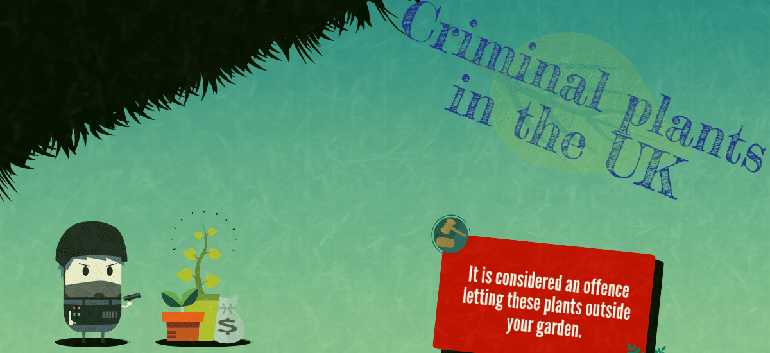
In their original environments, invasive plants are restrained by their natural adversaries, with whom they co-evolved. However, when they are introduced to a new environment without these natural enemies, some plants can flourish and spread uncontrollably, ultimately becoming invasive.
Classical biological control corrects this imbalance. It involves using specialised living organisms to manage pest populations, specifically invasive plants. By identifying the most harmful natural enemies from the invasive plant’s original range and releasing them as biocontrol agents into the invaded habitats, the plant’s deleterious effects can be minimised in an environmentally sound, long-lasting, and cost-efficient manner.
Several non-native invasive species have taken root in the UK and are causing significant negative impacts on our surroundings, economy, and daily activities. Although it is usually not illegal to grow them in your own garden, they can do real damage if allowed to escape into the wild or disposed of in a careless manner. These plants spread vigorously, making control costly and difficult. Fines and regulations apply to anyone who fails to follow the law. See the most invasive plants in the UK for yourself:
Table of Contents
Japanese knotweed
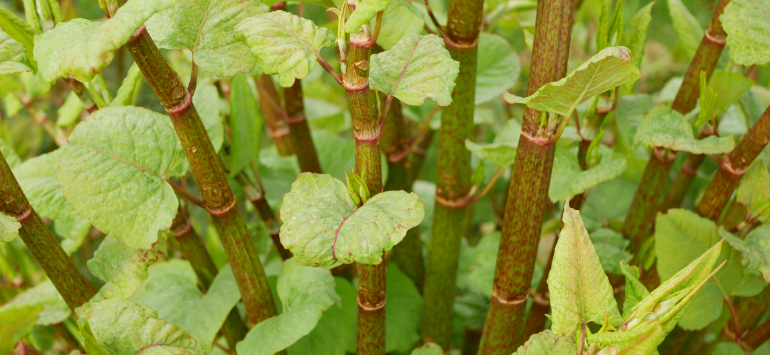
Initially introduced to the UK as an ornamental plant due to its attractive white blossoms that bloom during the warm spring and summer months, Japanese knotweed is now widely distributed across various habitats such as riverbanks, roadsides, railways, and abandoned land where it can spread unrestrictedly.
Despite the fact that the plant cannot propagate through seeds and spread through its root system, its roots are sturdy and rapidly expanding. This invasive weed can significantly reduce property value by up to 20%, and most lenders refuse to provide loans unless an insurance-backed guarantee is in place. Eradicating Japanese knotweed is a challenging task as even a tiny fragment of its root can produce an entirely new plant. You should use Japanese knotweed removal companies that offer insurance-backed guarantees.
Giant hogweed
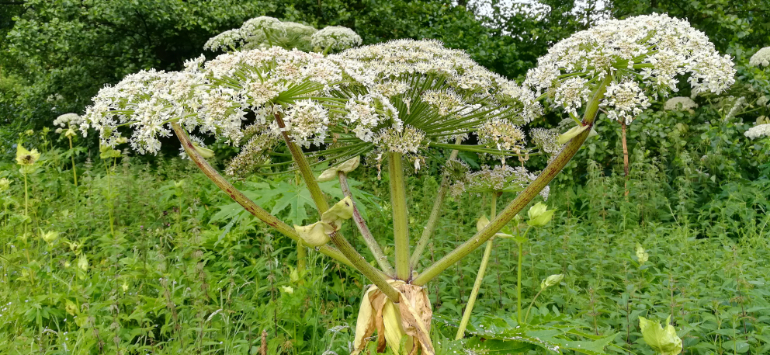
Giant hogweed, which can grow up to 10 feet tall, resembles overgrown cow parsley. This invasive to the UK plant reproduces via its seeds, which are dispersed by birds, animals, and waterways. Each flower head has the potential to produce up to 50,000 seeds, which can rapidly overrun an area, particularly during floods. The seeds can last for up to 20 years, so control measures must be continued until the soil seed bank is fully depleted, and no further growth is observed.
While not as challenging to manage as Japanese knotweed, it still requires attention to prevent its spread. It is unlawful to allow this weed to encroach on neighbouring properties, entitling you to make a legal claim if it has spread to your land. It is typically found in damp soil areas like riverbanks. The plant’s sap contains harmful chemicals that react with sunlight when in contact with human skin, resulting in blistering within 48 hours. As a result, mowing or weeding that invasive plant without appropriate gear can be difficult.
Himalayan balsam

Himalayan balsam, a close relative of the busy Lizzie, towers above head height and poses a significant weed problem, particularly on riverbanks and wasteland, but it can also infiltrate gardens. It grows swiftly, spreading rapidly and overpowering other vegetation in its path. The plant boasts lovely pink flowers, making it appealing to gardeners who often share its seeds with friends.
The plant can generate massive amounts of seeds in explosive capsules, capable of hurling seeds several metres away from the parent plant. This rapid propagation method allows it to quickly dominate its habitat. The other means of distribution are via waterways, where the seed can stay viable for up to two years. Given that each plant produces over 800 seeds every year, it has enormous growth potential.
New Zealand Pygmyweed
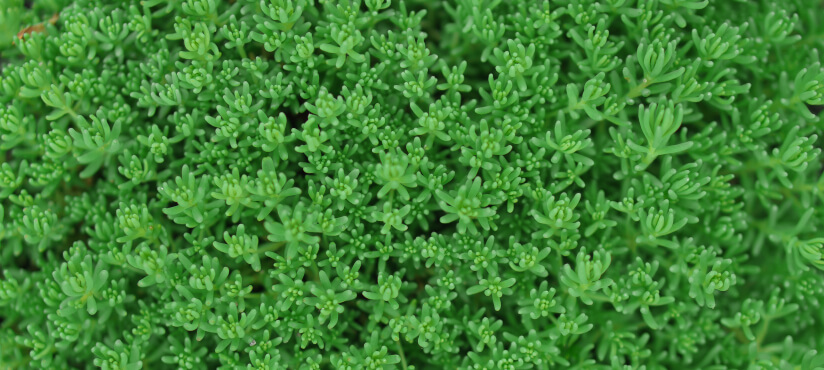
New Zealand pygmyweed is a highly invasive species that poses a considerable challenge to control. It is one of five water plants banned from sale in the UK. This invasive plant thrives in water or soil with a high water content near lakes and streams. Due to the thick mat, it forms on the surface of ponds, it can deplete oxygen for fish and frogs, rendering garden ponds uninhabitable. Its dense growth pattern can make it appear as if it’s dry land, putting children and pets at risk. Additionally, New Zealand pygmyweed can heighten flooding risk and hinder recreational activities, such as fishing.
This invasive plant doesn’t experience significant dieback in the winter, causing its mass to grow exponentially each year and making it arduous to manage. Fragments of this species can easily spread via clothing or equipment, such as boats, fishing gear, and clothing, or through animals.
Green alkanet
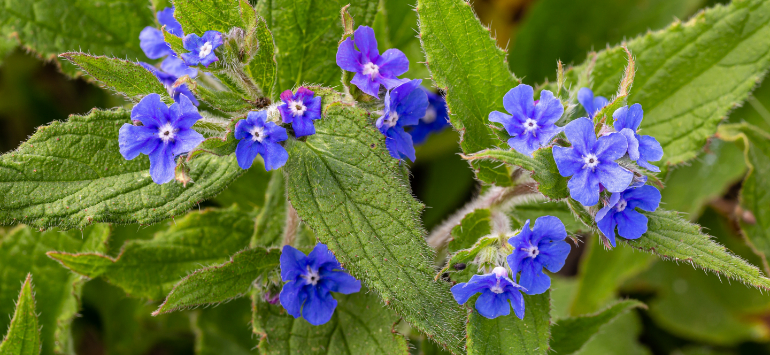
Green alkanet is an invasive perennial commonly found in shady and damp areas. Despite being cultivated in gardens for its attractive blue forget-me-not flowers, the plant can quickly become a weed when grown under the right conditions. It is capable of self-seeding, which leads to the growth of new plants close to the parent plant. Additionally, it can be spread over long distances through animal fur or clothing. It has tall, hairy stems, bristly leaves, and blue flowers with a white centre that opens from a pink bud.
While it is considered a weed, it is less difficult to manage compared to other invasive species, although complete eradication is still challenging. Previously regarded as edible, it is now known to contain carcinogens. Handling the plant requires caution as the hairs or bristles can cause severe irritation.
Three-cornered garlic
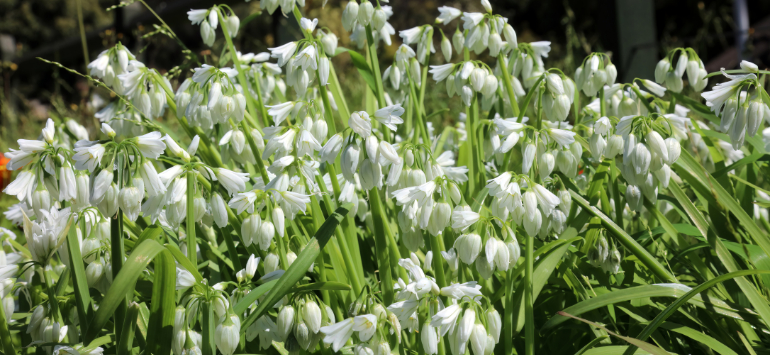
This invasive plant, which is illegal to plant or allow to grow in the UK, was originally brought from the Mediterranean in the 18th century. It is considered invasive due to its white pendulous flowers which produce large seeds that attract ants. These ants then spread the plant, allowing it to grow wild along roadsides, banks, verges, hedgerows, woodland and field edges, as well as on waste ground.
Its dense colonies can outcompete other spring flowers such as primroses and violets, and in some cases, it forms dense stands spreading over many metres. Although most common in southern and western Britain, it is now spreading further north.
Rhododendron ponticum
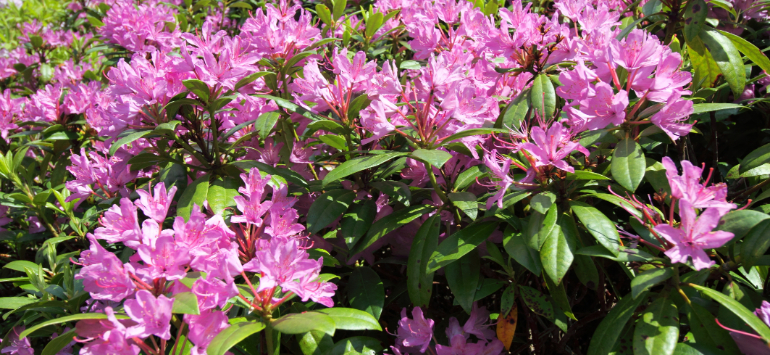
Rhododendron ponticum, introduced to Britain as an ornamental plant in the 1700s, has disastrous consequences. It creates dense thickets and outcompetes native plants by blocking sunlight. Over time, if left unchecked, it can dominate the habitat and eliminate all other plant life due to its extensive root system and toxic leaf litter. To make matters worse, it hosts Phytophthora, a fungus-like pathogen that harms other native trees and plants.
The plant produces over a million small seeds each year that can spread through the wind. This makes it incredibly challenging to eradicate by either digging or using herbicides. Some rhododendron varieties can survive for centuries, and planting or allowing their growth is illegal in the UK.
Spear thistle
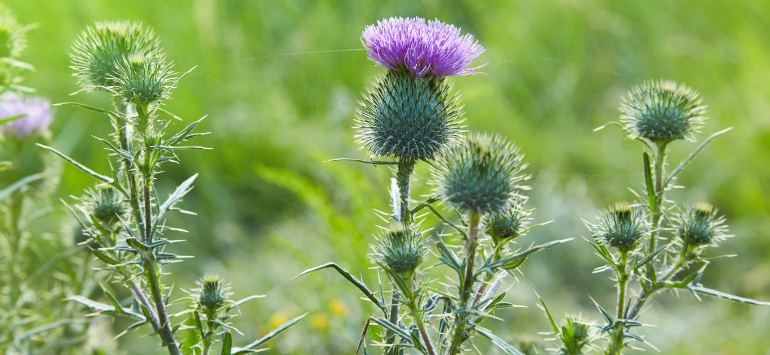
The spear thistle is a ubiquitous species in the UK, commonly found from July to October on disturbed or cultivated grounds like pastures, field edges, and roadside verges. It is easily recognizable by its classic thistle appearance: a spiny ball topped with purple, puffy flowers.
Like other thistles, this invasive plant can cause problems on agricultural land. It is considered an injurious weed species because it spreads quickly via wind-dispersed seeds. This alluring plant is highly invasive and poses a significant threat to other native UK species. It is remarkably adaptable and has the potential to compete with almost every plant it encounters.
Common ragwort
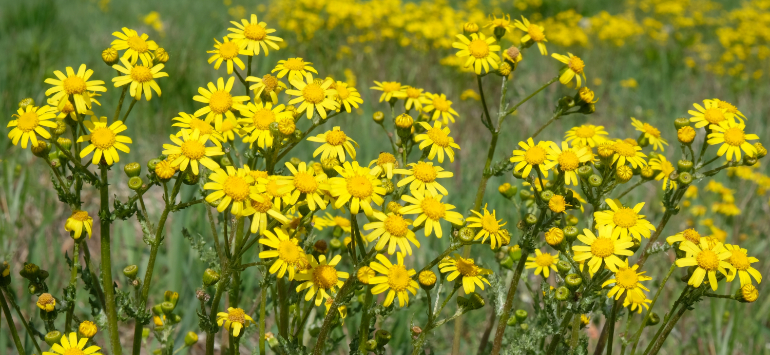
While it is a native species and not considered strictly invasive, it is convenient to include Ragwort in this category as it shares many of the problems associated with invasives. Many regions have implemented proactive strategies to manage Ragwort, but this plant thrives in neglected areas.
Despite its attractive yellow flowers, Ragwort contains Pyrrolizidine Alkaloids (PAs) which are highly toxic to grazing animals, particularly horses. It is estimated that Ragwort poisoning accounts for 2000-6000 horse deaths annually in the UK. Although it is one of the most commonly found weeds in the country, its growth should be strictly controlled to safeguard livestock.
Broad-leaved dock
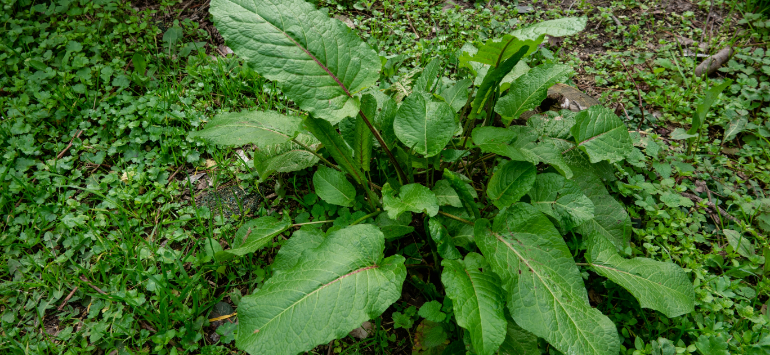
The dissemination of seeds by wind, water, animals, and machinery allows Broad-leaved docks to spread over large distances. Infestations can also be initiated by buds growing from broken taproots. Although it is a native species found throughout the UK, Broad-leaved dock thrives in high nitrogen environments on waste grounds, farmland, hedgerows, roadside verges, woodlands, and gardens.
As it proliferates, it can create dense stands that outcompete other species. While it is slightly toxic and can cause illness in livestock, the milky sap can also cause mild dermatitis. Each plant can produce up to 60,000 seeds annually, persisting in the soil for as long as 50 years, making complete eradication challenging.
Conclusion:
Invasive plants pose a significant threat to the native flora and fauna of the UK. In addition, they can also cause structural damage to buildings and infrastructure, leading to costly removal and control measures.
It is important to raise awareness about the impact of invasive plants and to take measures to prevent their introduction and spread. Proper management and control of these plants are crucial to preserving the biodiversity and sustainability of the UK’s environment.
Need a Gardener?
Enter your postcode to view our rates and availability in your area.
For questions about the services we offer visit our main site



